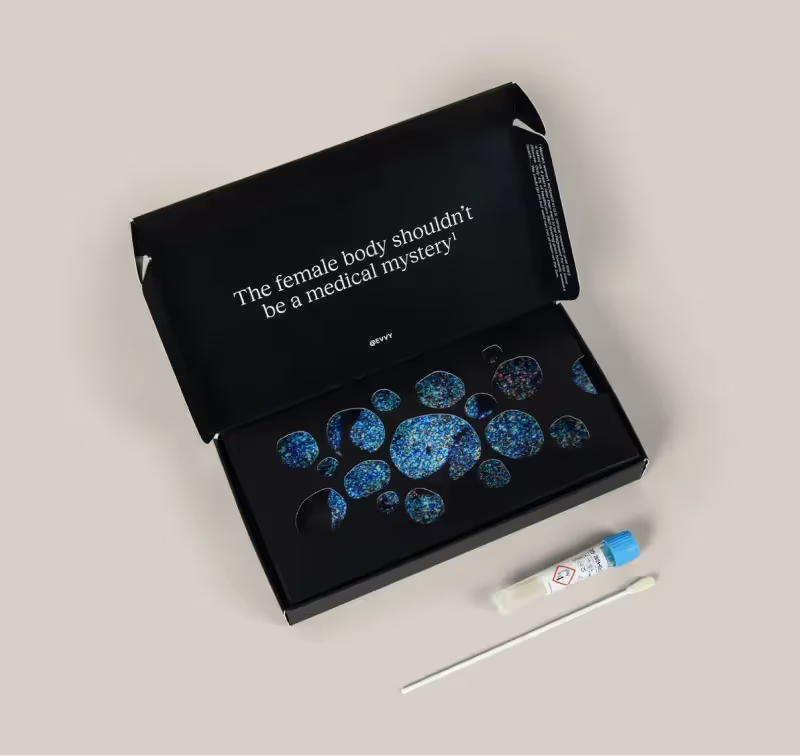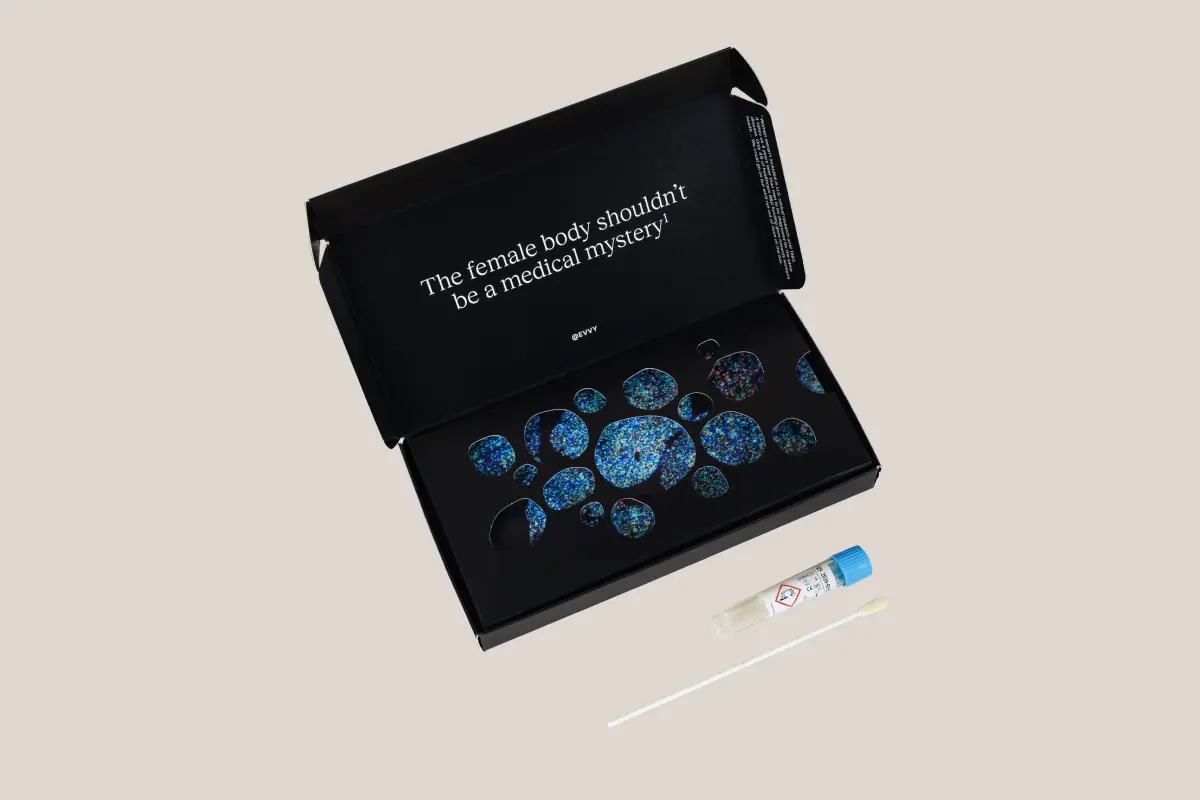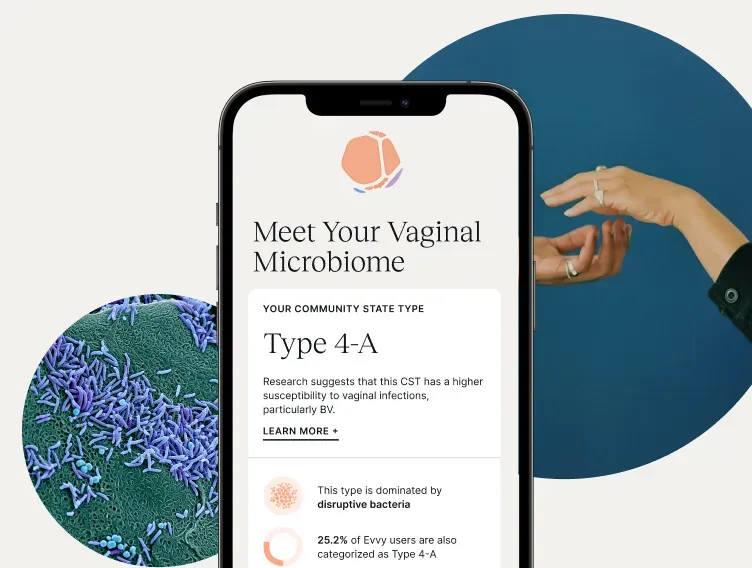

Can You Get BV and a Yeast Infection at the Same Time?
BV and yeast infections at the same time are usually nothing more than a nuisance, but they can sometimes cause further complications if left untreated, so it's important to understand the difference between them, why they occur, and how to treat them.
Words by Olivia Cassano
Scientifically edited by Dr. Krystal Thomas-White, PhD
Medically reviewed by Dr. Sameena Rahman, MD
Do you know what’s worse than having bacterial vaginosis (BV) or a yeast infection?
Having both.
Yes, it’s totally possible to have bacterial vaginosis and a yeast infection at the same time. Research has shown 20-30% of women with bacterial vaginosis are co-infected with yeast. It’s also very possible that many women with a BV-like environment may also have organisms linked to aerobic vaginitis (AV).
BV and yeast infections are usually nothing more than a nuisance, but they can sometimes cause further complications if left untreated, so it's important to understand the difference between them, why they occur, and how to treat them (especially if you have more than one at the same time). Keep reading to learn what to do if you have BV and yeast infection at the same time.
The difference between BV, AV, and yeast infections
The main difference between these vaginal infections is the cause. BV and AV are bacterial infections, meaning they’re caused by the overgrowth of “bad” bacteria in your vagina. The key difference is the type of bacteria. Bacterial vaginosis is caused by anaerobic bacteria (which don't need oxygen to survive) while AV is associated with oxygen-loving aerobic bacteria.
On the other hand, yeast infections — also referred to as vaginal candidiasis — are caused by an overgrowth of yeast (a type of fungus) called Candida. Most yeast infections are caused by Candida albicans, specifically.
It's not uncommon to confuse different vaginal conditions because their symptoms can be very similar. Additionally, some conditions may not even cause noticeable symptoms. And if you happen to have bacterial vaginosis and a yeast infection simultaneously, it can be really confusing to figure out what's happening down there.
Symptoms of a vaginal yeast infection typically include:
- itching
- a burning sensation when you pee or have sexual intercourse
- redness in or around your vaginal area
- thick, clumpy discharge resembling cottage cheese.
AV symptoms may include:
- sticky, yellow, or green vaginal discharge
- a foul or “rotten” vaginal odor
- redness and swelling around the opening of the vagina
- pain during sexual intercourse
- a stinging and/or burning sensation
BV symptoms often include:
- thin grayish vaginal discharge
- a fishy odor
- Sometimes, itching and burning when peeing.
It's really important to not ignore these symptoms when they show up, no matter how mild they are because many vaginal infections can cause reproductive health complications when left untreated. It's also not uncommon to mistake a sexually transmitted infection (STI) for bacterial vaginosis or a yeast infection, because their symptoms can be really difficult to tell apart.

Recurrent symptoms? Get Evvy's at-home vaginal microbiome test, designed by leading OB-GYNs.
Why do we know so little about mixed vaginal infections?
Unfortunately, even though mixed vaginitis is probably very common, there is very limited data studying women with these conditions. This is partially due to the lack of accurate diagnostics tests available. Unlike comprehensive blood work which tests for many variables (i.e. white blood cells, glucose, cholesterol), today’s standard testing at the doctor’s office only tests for specific bacteria or relies on microscopic observation to see if lactobacilli are present.
In fact, in the US, it's rare for doctors to diagnose AV because it's common practice to think of these infections as bacterial vaginosis with aerobic bacteria present. So while this happens all the time, we have very limited data on the incidence of this type of co-infection.
Recent research by Evvy found that Evvy users who had AV organisms present tended to have a greater number of symptoms and more severe symptoms, than those with bacterial vaginosis alone. This is an area that Evvy is very interested in studying, and hopefully, we can bring you more updates soon.
How do you get BV and a yeast infection at the same time?
So why is it that people can have more than one type of vaginal infection at the same time? Other than bad luck, that is.
In a healthy vaginal microbiome, lactobacilli (the "good" bacteria) are like bodyguards because they keep your vagina healthy and safe. These beneficial bacteria produce lactic acid, which helps to maintain a low vaginal pH level (between 3.8 and 4.5). This low vaginal pH level is crucial because it protects against harmful pathogens that can cause infections.
Lactobacilli are also great at taking up space on the vaginal wall, which prevents other harmful bacteria from setting up shop. Plus, they produce bacteriocins, which are like your body's natural antibiotics that can stop the growth of disruptive bacteria. And if that's not enough, lactobacilli can even help to reduce inflammation in the vaginal area, which is really helpful for overall vaginal health.
Most of these infection-causing bacteria and yeasts already live in your vaginal microbiome without causing too many issues. When levels of lactobacilli are disrupted, though, pathogenic bacteria thrive and cause dysbiosis — a state of imbalance in the vaginal microbiome. This is because a drop in Lactobacillus levels results in a loss of the protective acidity and antimicrobial function that they provide. It’s a “when the cat’s away, the mice will play” type of situation.
Many things can disrupt the natural balance of your vaginal microflora and make you more likely to develop BV or a yeast infection, including:
- sexual activity, especially if it's unprotected, with a new sexual partner or multiple partners
- your menstrual cycle
- smoking cigarettes
- having had repeat infections in the past
- having uncontrolled diabetes or having a compromised immune system
- using douches or scented vaginal products, like tampons or washes.
That’s why we tend to see lots of different bacteria present in the absence of healthy bacteria like lactobacilli. These can range from "bad" bacteria like Gardnerella and Prevotella, AV-associated organisms like E. coli, yeast (like Candida albicans), or several at the same time (because when it rains, it pours).
How to treat BV and a yeast infection at the same time
If you happen to have multiple infections at the same time, it can be really tricky to figure out which one to treat first. There are various factors to consider, so the best thing to do is to talk to your doctor about what the best treatment plan would be for you.
Your doctor will prescribe antibiotics to treat bacterial vaginosis or AV, and antifungal medication to treat yeast infections. They may also recommend over-the-counter treatments to ease some of the symptoms to use alongside medications, such as an anti-itch vaginal cream.
Unfortunately, there isn't a lot of research on mixed vaginitis or co-infections, so there aren’t any real treatment guidelines available, but we hope that as diagnostics improve, better treatment options will become available. To give you an idea, the different treatment plans may focus on what symptoms are bothering you the most, and what other conditions could be causing the infections to come back. With vaginal infections, the best course of action is always to customize the treatment plan according to your unique health, symptoms, and lifestyle.
To add insult to injury, treating one infection might result in another one popping up, which is definitely not what anyone wants. For example, taking antibiotics for bacterial vaginosis can increase your risk of developing a yeast infection, as it kills off enough bacteria to leave the environment open for yeasts like Candida albicans to colonize. While we do know that this can happen, we don't have much information about the risk factors that cause sequential infections.
FAQs
What happens if you have both BV and yeast infection?
If you suspect that you have a yeast infection and bacterial vaginosis, the best thing is to see your healthcare provider, who will determine the best treatment plan for you based on your history, symptoms, and lifestyle (for example, whether or not you’re pregnant). Alternatively, you can take an Evvy test. For eligible users, we offer first-of-its-kind clinical care, including an Rx treatment program developed by a provider, supportive coaching, and much more.
Why do I get so many yeast and BV infections?
Both BV and yeast infections have a nasty habit of coming back even after treatment. Dealing with a vaginal infection can be uncomfortable and frustrating, and it can be even more discouraging when it seems like it just won't go away. Unfortunately, up to 30% of women experience recurring bacterial vaginosis within one month, while up to 28% experience repeat yeast infections within a year. There are several reasons why you might have recurrent infections, such as if the initial infection wasn't correctly diagnosed or not completely treated.
What mimics BV and yeast infection?
Some sexually transmitted infections (STIs) can mimic the symptoms of bacterial vaginosis and yeast infections. Trichomoniasis, for example, can cause abnormal discharge with a fishy odor, similar to bacterial vaginosis. Meanwhile, common symptoms of chlamydia can often be mistaken for a yeast infection — including burning, itching, and clumpy white discharge resembling cottage cheese. Additionally, vulvar skin conditions like lichen planus can cause itching — you can learn more in our article on distinguishing between vaginal and vulvar conditions.





